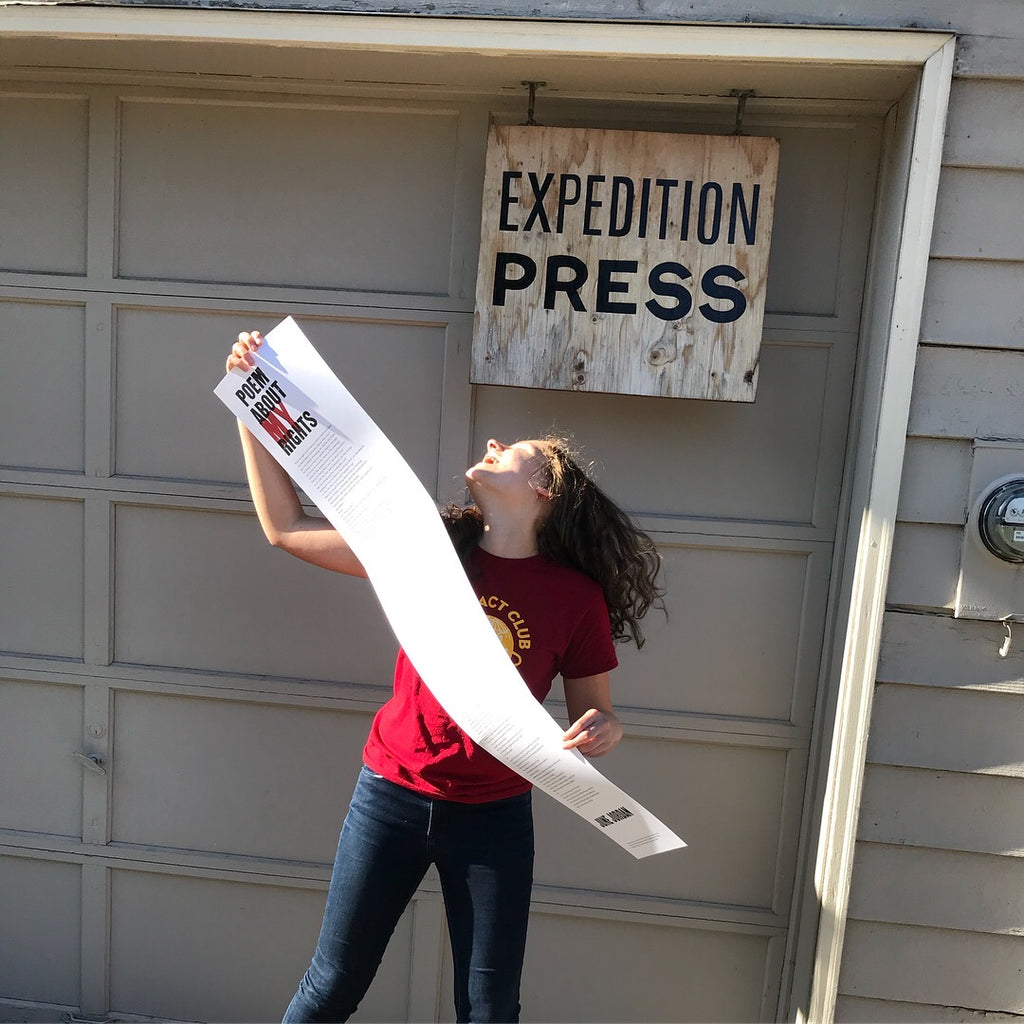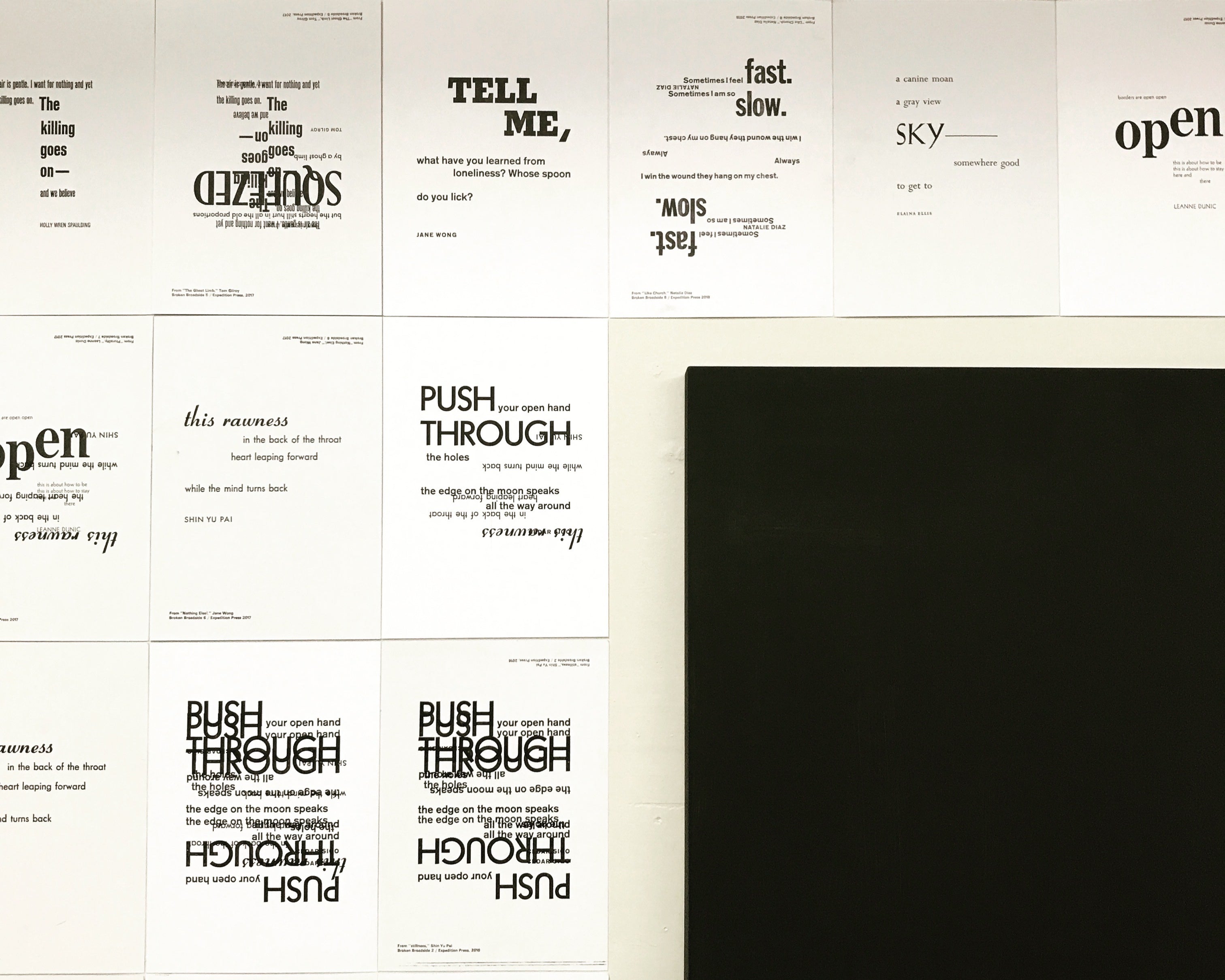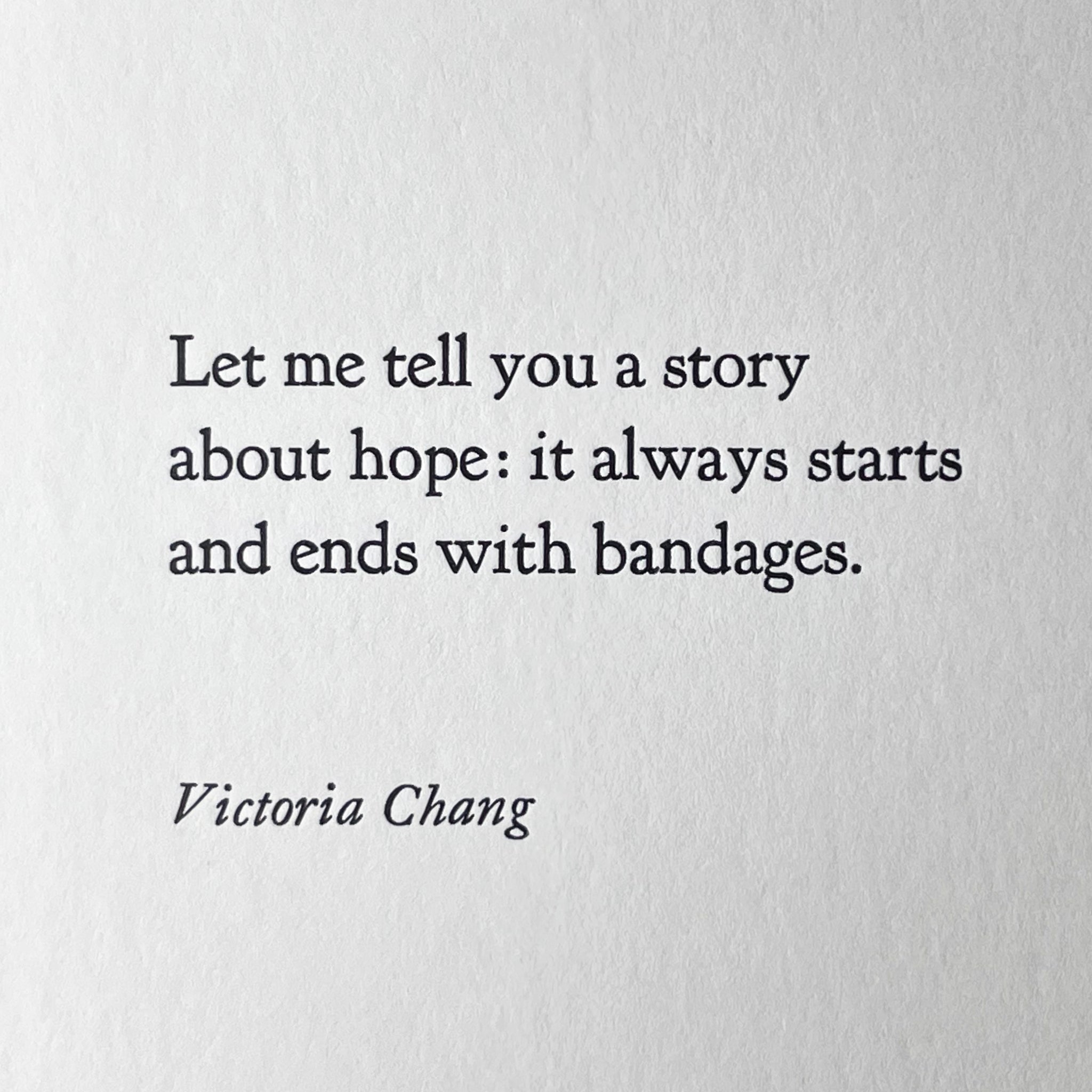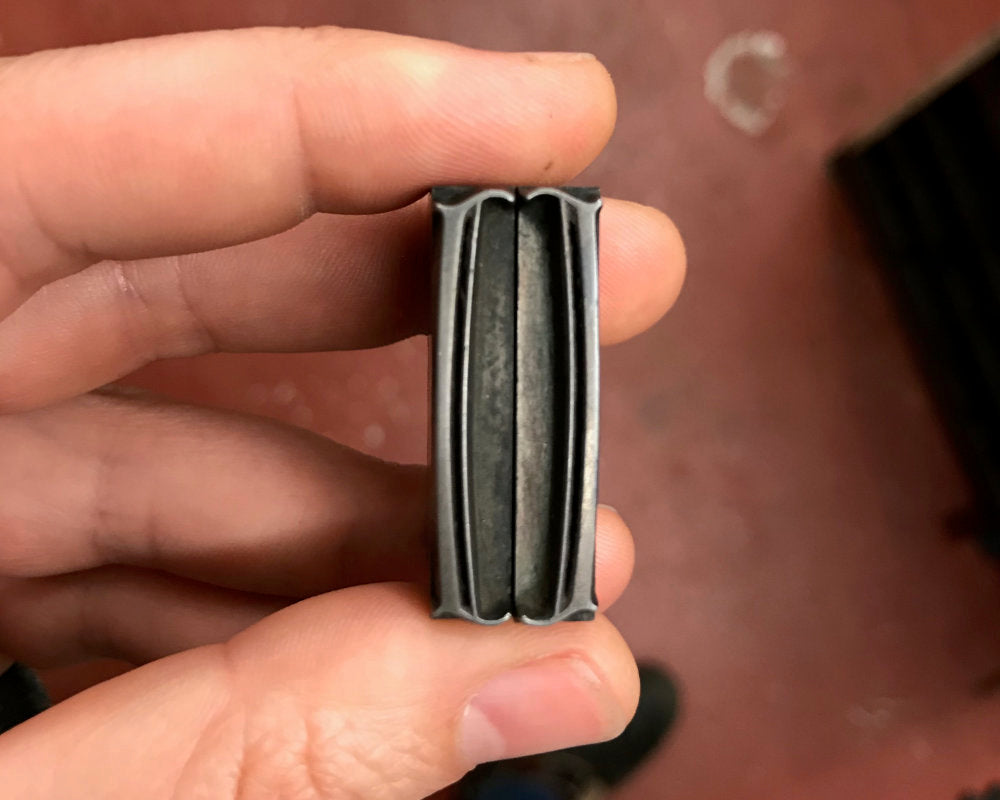June Jordan by Sabina Smith

Note: this post was written by Sabina Smith, age 15, pictured above operating our 1906 Colt’s Armory Press.
When I first read June Jordan’s “Poem about My Rights,” it was the first day of spring break. Conferences had just ended and I was sitting at a coffee shop next to Expedition Press with my friend. We saw Myrna and she invited us over. On her wall in the shop there was a copy of the poem tacked up. I began reading the poem because it caught my interest, and I still can’t fully describe how powerful it felt, so full of emotion and honestly, I’d never read anything more mesmerizing.
When I was finished reading, I looked at Myrna and I think the first thing I said was just “wow.” Myrna asked me about how it made me feel, and I had a difficult time trying to describe it. She said that was because the language in the poem was already in such a distilled form, it could not be refined more or paraphrased easily. I remember this because it really stuck out to me. Poetry exists to convey emotions that our language has no words for. I told Myrna that I felt like this was a poem that could change people’s minds, that I wanted to spread this poem so everyone could see it, and now we are.
I had never read a poem like that, and I didn’t really understand the importance of poetry until I read it. I think it affected me so much because I was stressed out and worried about our government and our country. I was saddened by the reemerging hate that I had never encountered so extremely. This is a poem that gave me hope, and opened my eyes to more issues at a personal level. “Poem about My Rights” felt so powerful to me because June Jordan had witnessed such terrible times, lived through some of my deepest fears, and still, she shared her story with the world in such a raw and powerful way, and her words ring truth.
This project is important to me because I feel it is my contribution to what I believe in, and I am using my “voice” for others who are unable to. I admire women like June Jordan deeply, and I am sharing this poem to act as a wake up call, a reminder of our past, and that these issues have not just disappeared. I am sharing its strength with all of you because it is giving me strength too.
Process: how we went about creating the broadside

Since spring break 2017, Myrna and I have been working on designing, producing, and distributing the poem. The first month or so we focused on design elements of the broadside, the layout of the poem, color, type, and size. We also took this time to organize what needed to be done concerning the project. This beginning was a time to create ideas, and we did not start actual production until later. Next we worked with measurements, estimating line length, type size, how many lowercase “e”s and capital “I”s. We began test setting different lines in different typefaces as well. This was my first experience working with setting type, lock up, and the printing press.
Before we even began the project, I emailed Copper Canyon Press to get permission to print the broadside because they published Directed By Desire, the book the poem is in. We also got permission from the June Jordan Literary Estate. A couple weeks later Copper Canyon got back to us, and gave us permission to print the poem. Elaina Ellis, our main contact, was very helpful and gave us many ideas for distribution, and encouraged our idea of benefitting non-profits working on a national scale. I chose Planned Parenthood and Black Lives Matter.
From then on we began brainstorming layout, and I looked at several other broadsides for information. We had to work out our budget as well, to cover paper, ink, and packaging, and agreed to volunteer all our time. Throughout the year, I worked on setting, printing, and distributing (putting away) type, and I have helped out in the shop as well, to get to know the different processes and materials.
Best parts & challenges
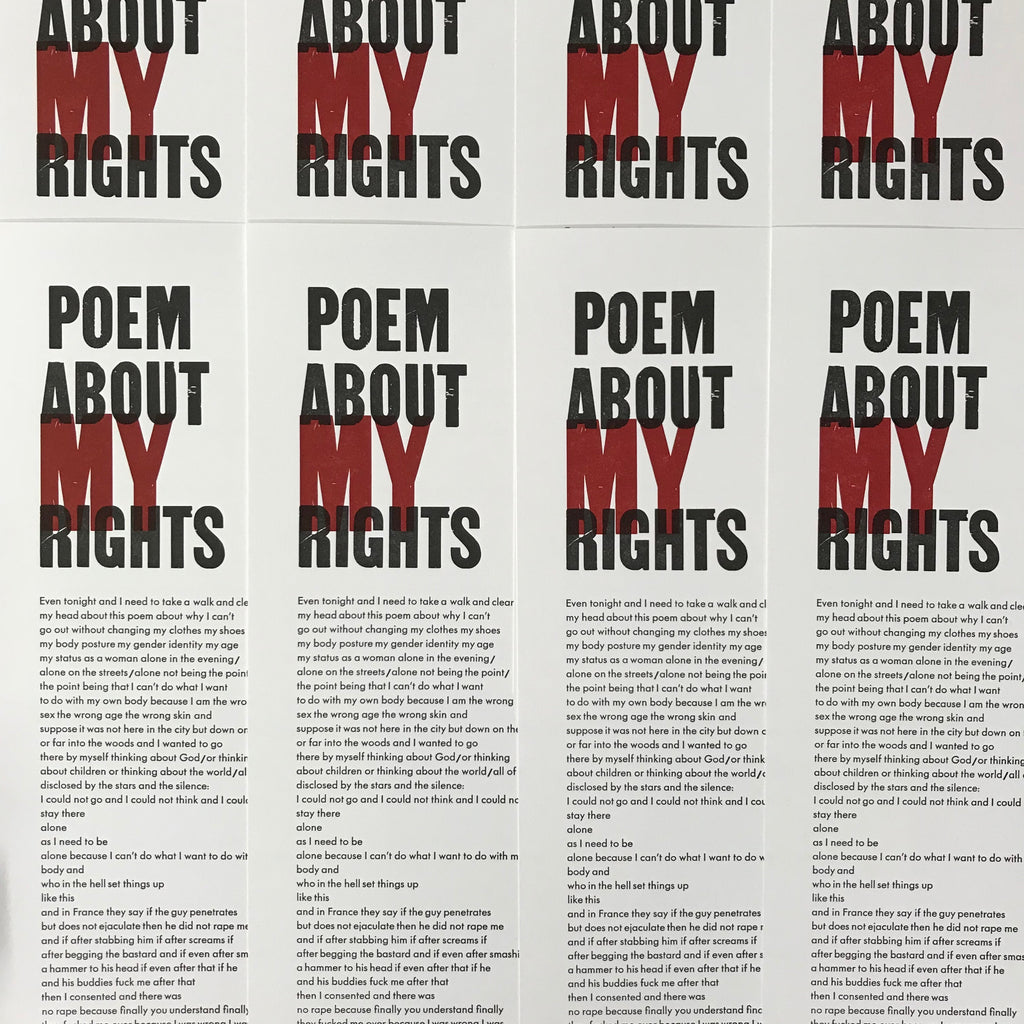
One of my favorite parts of the design and production process was working with the wood type! The way different letters turned out in the title makes me very happy. I love the “R” with the slash through the middle. Wood type has so much depth and character, and that’s why we used it. I also enjoy the actual printing of the pages, I even ran the press for the whole run last Friday! It’s also amazing now to see all the printed pages. I enjoy working with the Colt’s Armory press and the Italian board shear. I like operating the press and seeing the words come to life. The best part about this project for me is knowing that with it, I am contributing to a greater cause, and all of our hard work is going towards something that I care about and believe in.

An extremely difficult part of the project was the decision making, especially concerning the design of the broadside. We ran into some issues with the type we used, 18 Spartan, because we had a limited amount (I could only set and print about 30 lines at a time, of a 114 line poem!), and there were no slashes or italics. We had to decide how to fix problems, and how to make decisions even if it is not the original idea, and just going with it and accepting it, and even coming to love the solution that we’d have never thought of otherwise. For instance, the red line “I am not wrong: Wrong is not my name” is in italics in the original poem. We decided the color had a similar effect, it does the same job italics do of placing emphasis, plus it ties the design together by echoing the red in the title. It took me forever to decide what the title should look like, especially that red MY.
Words over time / where we are now
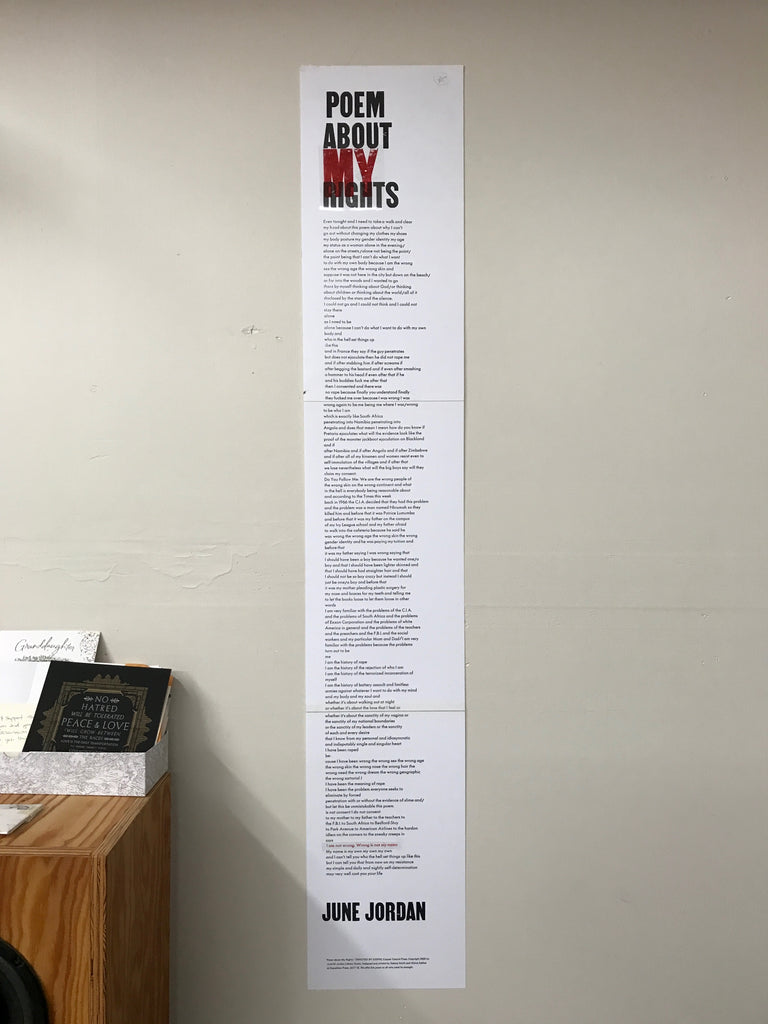
Above: mocking up the print, it’s 4ft long!
At the beginning of the project, I was super excited and I didn’t really know what I was doing. As I’ve worked with June Jordan’s words, I have found new things that I did not see when I first read it. However more recently, I had a bit of trouble. I kept finding myself thinking who am I to share this poem? How does this affect me? I am not a woman of color and I kept feeling as if I was stealing her words, and claiming them as mine.
Rereading the poem however has made me aware of why I am doing this project in the first place, and that I am not stealing her words, I am sharing them. I simply want to bring these words into the hearts and minds of others. I think I felt this way because I had not taken the time to feel the poem as a whole for a while, since I had been working letter by letter, and line by line for so many months. This poem gives me strength, and I admire June Jordan’s strength so deeply.
This project has given me an inside look at the printing world. I would love to do more projects with printing in the future. I have gained a greater appreciation of poetry as well, so I will definitely be reading some more poetry. My next project would be a lot smaller than this current one, probably a piece of personal propaganda. I would love to work some more at Expedition, maybe I could even intern in the shop. I am excited to spread these amazing words, and I really hope that this poem takes hold.
All six press runs have been finished and all the type has been put away. Right now we are working on trimming and hinging the sheets — the three pages come together to make a 4ft long broadside. Soon we will be packaging, posting them online for sale, shipping them around the world, and making our first donations to Planned Parenthood and Black Lives Matter. Although our letterpress edition is limited, we are looking into producing a second digitized version that can be available ongoing.
This broadside will be released on June 2nd, 7pm at Open Books in Seattle along with a poetry reading honoring June Jordan. If you live nearby, I hope you can make it!
